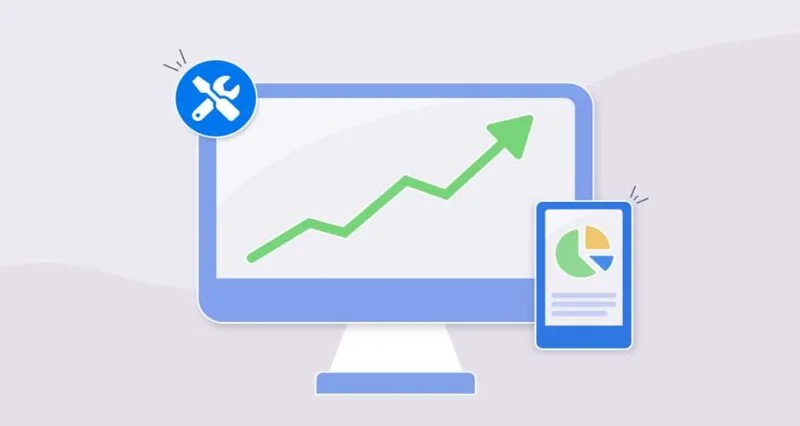
In today’s digital landscape, web analytics tools are essential for businesses to comprehend user behavior and enhance performance. Key considerations include pricing, heatmaps, visitor recordings, and user targeting options. Evaluating these factors ensures access to comprehensive insights and actionable data for optimizing the user experience.
Pricing: Striking the Balance Between Affordability and Value
The pricing model of a web analytics tool like Hotjar pricing significantly impacts its accessibility and feasibility for businesses of varying scales. While some tools offer free basic plans with limited functionalities, others follow tiered pricing structures based on features, usage, or the number of tracked events. Assessing the pricing plans against your business’s specific needs and budgetary constraints is crucial.
Opt for tools that align with your growth trajectory, offering scalability without excessive costs. Additionally, consider whether the pricing structure accommodates your anticipated volume of website traffic and data processing requirements. Opting for a tool with transparent pricing and flexible billing options ensures cost-effectiveness and eliminates unwelcome surprises down the line.
Heatmaps: Visualizing User Interactions for Enhanced Insights
Heatmaps are invaluable tools for visualizing user interactions on webpages, providing insights into maximum engagement, user behavior patterns, and potential pain points. By leveraging heatmaps, businesses can identify which elements attract user attention, such as clickable buttons, navigation menus, or specific content sections.
When evaluating web analytics tools, prioritize those offering robust heatmap functionalities, including click heatmaps, scroll heatmaps, and mouse movement heatmaps. These features empower businesses to optimize website layout, content placement, and call-to-action (CTA) buttons for maximum user engagement and conversion rates. Furthermore, real-time heatmap tracking enables swift adjustments and iterative improvements to continuously enhance the overall user experience.
Visitor Recordings: Unveiling User Journeys Through Session Replays
Visitor recordings offer a granular view of user interactions by capturing and replaying individual browsing sessions in real time. Businesses gain profound insights into user navigation paths, mouse movements, clicks, form interactions, and session duration by analyzing visitor recordings. This qualitative data enables a deeper understanding of user behavior and pain points, facilitating targeted optimizations to enhance website usability and conversion rates.
Look for web analytics tools that provide:
- Comprehensive visitor recording functionalities.
- Allowing users to filter recordings based on parameters such as traffic source.
- Device type.
- User demographics.
Additionally, features like session tagging and note-taking facilitate team collaboration, streamlining the identification of optimization opportunities and implementing data-driven strategies.
Targeting Options: Tailoring Experiences Through Personalization
Personalization lies at the heart of effective digital marketing strategies, enabling businesses to deliver tailored experiences that resonate with individual user preferences and behaviors. When selecting a web analytics tool, prioritize options that offer diverse targeting capabilities, allowing for personalized content delivery, dynamic messaging, and behavioral triggers.
Explore tools equipped with advanced targeting options, such as geolocation targeting, device-specific targeting, and behavior-based targeting. These features empower businesses to segment their audience effectively and deliver relevant content or offers based on specific criteria, increasing engagement, retention, and conversion rates. Additionally, A/B testing functionality enables data-driven targeted campaign optimisation, ensuring continuous improvement and maximum impact.
User Testing Recruitment: Harnessing Insights Through Feedback and Testing
User testing recruitment features enable businesses to solicit feedback from targeted user segments, facilitating usability testing, surveys, and feedback collection. By gathering qualitative insights directly from users, companies can identify pain points, preferences, and areas for improvement, guiding iterative enhancements to the website interface and user experience.
Seek web analytics tools that seamlessly integrate user testing platforms or built-in recruitment functionalities for conducting surveys, polls, or usability tests. Additionally, features like audience segmentation and targeting options facilitate precise recruitment of participants based on predefined criteria, ensuring representative feedback and actionable insights.
Selecting a practical web analytics tool requires comprehensively evaluating various factors, including pricing like those of Hotjar pricing, feature set, and usability. By prioritizing functionalities such as heatmaps, visitor recordings, targeting options, and user testing recruitment, businesses can gain deeper insights into user behavior, optimize website performance, and deliver personalized experiences that drive engagement and conversions.


